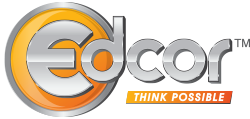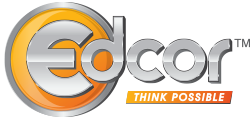Three of my best friends constantly complained about how they couldn’t go to the gym and were gravely concerned about their health. Every call, every meeting – that’s the one issue we discussed. As a feasible solution, we decided to sign up for a half-marathon in 2022. That way we had to train as we were chasing a time-bound goal. So, for Christmas in 2020, I bought them gym equipment that could be easily set up in a corner of their respective homes.
A year later, one of them is in great shape; the second one set up everything but never exercised because she didn’t know how to use the equipment; while the third one was so burnt out with the additional duties of a newborn that she didn’t even get the time to open the boxes. Our game plan wasn’t suited to function at 50% – so we gave the goal a pass. What really bothered me is that I spent so much money, and the equipment wasn’t even used!
Isn’t this happening in Corporate America too when it comes to Educational benefits?
Statistics show that American employers spend around $180 B annually on upskilling programs, out of which a significant chunk is towards tuition reimbursement. Even though more than 75% of the American workforce is interested in upskilling programs, only 40% know about their employer’s tuition assistance programs, 25% of interested employees actually start their application, and a mere 2 – 4% of employees actually participate in these programs. Underutilization is gravely sabotaging the upskilling goals of corporates. Makes one cringe and delve into a root-cause analysis to fix the problem, doesn’t it? That’s exactly what we will be doing here!
Read Upskilling is Critical for Businesses and How education benefits integrate with your DEI strategy.
We all know the paybacks of Upskilling, and how education benefits fit in the DEI strategy of organizations. To keep this discussion focused, let’s look at the top 5 reasons why education benefits programs are underutilized, and how to fix the core issues.
-
Lack of time
The number one reason why employees do not go back to school is not money – it’s time! With the ever-increasing items on the to-do list, it’s sometimes the easiest to deprioritize something that will yield long-term benefits – like higher education. However, this may prove to be detrimental for employers whose workforce is not upskilling for the jobs of the future.
Fix: Giving employees even an hour each day by adjusting their work schedules can help them in taking up a program that requires 3 – 5 hours of effort per week. Consider it an investment in your future.
-
Gaps in communication
Having the best policies does not matter unless there is awareness and uptake. Usually, the information about education benefits gets buried deep in the benefits website. Useful information is inaccessible even for the ones who are keen on pursuing educational goals, resulting in a lack of awareness and low uptake.
Fix: Have a solid internal communication plan in place. Sending regular internal emails about where and how to access the information, and whom to reach out to utilize the benefits help tremendously. Additionally, sharing success stories is a great way to indirectly and effectively promote these benefits. The top apps that can be used on mobile devices and desktops for internal communications are Yammer, Jostle, Slack, Microsoft Teams, and Simpplr.
-
Barriers to utilization or ease of use
Evaluate what percentage of your population is using the educational benefits, and have a plan in place to remove barriers preventing others to use these benefits. For some employees, especially women and diverse groups, financial constraints are the pertinent barriers stopping them from going back to school. The fact that they need to front the cost of education even though it might be reimbursed later is a deterrent.
For others, a degree is not an optimal way to fill skill gaps so they never utilize these benefits.
Fix: Debt-free degrees are designed such that the school scholarships or grants cover tuition over and above the employer contribution of $5250. Several employers have now put in place deferrals, direct bills, or voucher modes of payment for these courses, which translates to them truly incurring zero out-of-pocket costs – removing utilization barriers.
Further, having a holistic education benefits program that covers short-term certificates, CEU’s, and other courses may help upskill sections of the workforce who will benefit from these, at the same time making the benefits portfolio more inclusive.
-
Need for individual support to navigate the benefit
The number one reason why working professionals choose to go back to school is for career advancement and better financial opportunities, according to a Gallup study. Imagine being under so much pressure already, and add to it the ambiguity about credits, courses, and colleges. Overwhelming, isn’t it? This is one of the reasons why even the most informed ones choose to give higher education a pass.
Fix: The solution is Academic Advising. It targets the core elements of a learner’s success: right from choosing a suitable school, credits building, credits transfers, setting academic goals based on career interests, developing an academic plan, to staying on track to achieve those academic goals. The significance of Academic Advising is compounded for working adult learners who don’t have the bandwidth to navigate through heaps of information while balancing the act between their personal and professional lives.
-
Missing senior-level sponsorship to drive the benefit’s mission
It has been observed industry-wide that the top-down approach of communication works best for driving the utilization of education benefits. Senior management buy-in and support are vital to the success of these programs. That’s the level at which the annual plans and targets are set, and workforce mobility designs are charted out.
Fix: Involve a senior leader as a face of your program, and have them send out quarterly communications and health checks to all senior managers. Host lunch and learn and let them speak about the benefits of completing education. This way when it’s coming from senior management the point will hit home. Moreover, senior management sponsorship would help you implement the strategies outlined previously in this article.
If you are wondering whether I applied these learnings to my gym-equipment underutilization situation or not – the answer is both Yes, and No. Like you, I am working on it and taking one positive step each day.
![]() Spardha Khera, Edcor
Spardha Khera, Edcor
Edcor Advising Services partner has over 25 years of experience in producing marketing and engagement programs to drive interest, enrollment, and participation in education benefit programs. Additionally, our exhaustive database of institutions and programs enables us to match the Client’s upskilling needs and strategies. Along with Academic Advising, we will also work with you to drive an employee communications plan and annual schedule of events to reach employees in various ways throughout the year, leveraging both internal and external channels of communication and media, if desired.

Edcor Advising Services partner has over 25 years of experience in producing marketing and engagement programs to drive interest, enrollment, and participation in education benefit programs. Additionally, our exhaustive database of institutions and programs enables us to match the Client’s upskilling needs and strategies. Along with Academic Advising, we will also work with you to drive an employee communications plan and annual schedule of events to reach employees in various ways throughout the year, leveraging both internal and external channels of communication and media, if desired.
Spardha Khera, Edcor



